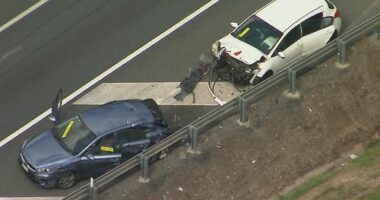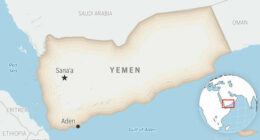Share this @internewscast.com
Premier Chris Minns yesterday floated the bounties idea as a potential way to reduce feral animal populations.
Invasive ferals such as pigs, cats, dogs, and rabbits can cost farmers millions of dollars every year, as well as wreaking a devastating toll on native flora and fauna.
Should the NSW government offer a bounty on feral animals?
But a consensus on how to deal with the issue is difficult to reach.
NSW Farmers Association president Xavier Martin welcomed Minns’ comments, saying all options needed to be on the table.
“The problem of feral animals â such as pigs â is an escalating concern for farmers, and we would welcome a shared responsibility, including additional funding, to control these nasty pests,” Martin said.

“Feral pigs, for example, cause millions in damage each year.
“They attack people and animals, they tear up paddocks, destroy fences, they really are incredibly nasty animals.”
Martin claimed animal pests were expected to cause more than $489 million in damage across the state by next year.
“That’s a staggering amount of money, and that’s why we welcome the premier’s approach to look at every option to slash the number of feral animals,” he said.

“We know there’s going to need to be tight controls to ensure safety, uphold biosecurity and enforce authorisation, but NSW Farmers is prepared to work with government to get this right and solve this problem once and for all.”
However, the Invasive Species Council, which holds as its primary mission the reduction of harm by feral animals to Australian ecosystems, slammed the proposal.
“This is a dirty deal with the Shooters Party for votes and has nothing to do with good feral animal management,” chief executive Jack Gough said.

“Bounty hunters might be heroes on the big screen, but in the real world of feral animal control, they’re just a waste of taxpayers’ money.”
Gough said the government had been previously briefed against introducing bounties, and accused bounty backers of ignoring scientific evidence.
“There are millions of goats, cats and pigs in NSW. Just to stop the population growing, you need to remove around 35 per cent of the goat population, 57 per cent for cats, and up to 70 per cent of pigs every single year,” he said.
“These are not weekend hunting targets â they require serious, coordinated programs led by professionals. Bounty schemes just don’t deliver at that scale.”

It’s the size of a thumbtack and kills with a single touch
Some research has shown bounties rarely result in more than 10 per cent of the species in question being killed, while hunters are also more likely to target younger animals and leave mature, breeding animals alive.
Gough said farmers should be concerned if funding for population control programs such as aerial shooting, baiting, trapping, and fencing, was redirected to ”ridiculous subsidising of recreational hunting”.












